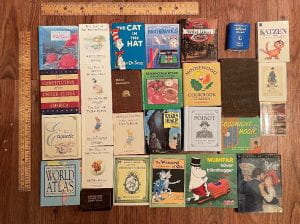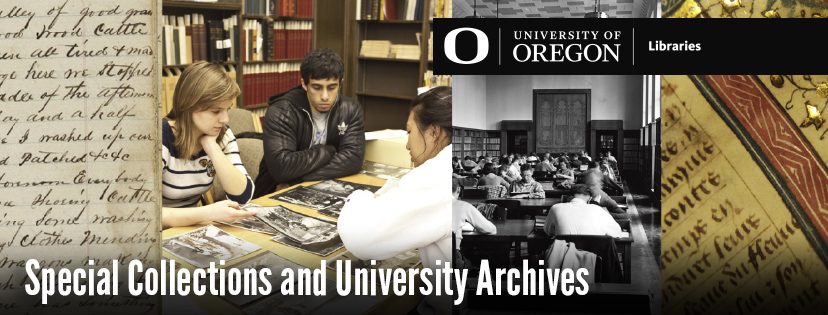2022 Book Collecting Prize Awarded to Hilary Rose Dawson for her Miniature Book Collection
Collecting things is an essential part of the human experience. Whether one collects Japanese watercolors or cigar boxes, Roman coins or coffee mugs, rare books, or baseball cards, one’s sense of self-awareness is increased by placing one’s own endeavors in a framework that comprehends the full spectrum of related activities.
There are four aspects of collecting: the creation of order, a fascination with chance, curiosity about the past, and a desire for understanding. Collecting is traced to a human need for making the environment seem less threatening and more understandable. Collectors create stable controllable environments as a way of coping with the chaos of the world and defining themselves in relation to it.
Book collecting is an instructive example of how the accumulation of objects contributes to the growth of knowledge. Book collectors collect “books” (as physical objects) as an interest in the crafts of bookmaking and in the printing and publishing industries, and as “works” (texts captured in this physical embodiment). Indeed, “book collectors” bring together specific editions to be read but also to be possessed as objects worthy of attention. Book collecting combines intellectual pursuits of amassing knowledge and a love of beauty in physical objects.
We are masters of the collections we surround ourselves with and we are artists who create worlds with accumulated objects. This is true whether we pursue our visions into the public sphere through display, research, or donation. The collecting we all do, with its varying repercussions, private and public, is our way of expressing that essential human endeavor of finding value in ourselves by collecting things we love.
Guidelines on Collecting
Book collecting dates to the Renaissance, when the educated elite acquired collections of illuminated bound manuscripts to meet their religious requirements but to also display their wealth and knowledge. A few decades later came the advent of the printing press which soon reduced the cost of books and made texts more accessible in the national vernacular. Today book collecting is an activity open to anyone from the rich and famous to the average person on a tight budget; the only requirement is a love of books. With a little knowledge and some patience, everyone can assemble a very fine collection without spending vast sums of money.
The Antiquarian Booksellers’ Association of America provides some useful guidelines for collecting:
Collect what you love. The best book collections reflect the personalities and interests of their owners. Our books will outlast us, so view it as your legacy of preserving your books for the next generation.
Condition is of high importance. Buy at the best condition possible within your budget. It is generally better to have a small collection of superior quality books than a large collection of lower quality.
Pick a specific collecting area. Begin with a narrow focus and expand as you develop your collection or start over with an entirely different topic.
Don’t be afraid to be original. It is exciting to collect in a niche subject area, and you’ll have less competition for material.
Look at books. The internet has made it easy to collect from home using ViaLibri.com and you can also view dealer’s catalogs online. But you should still spend time viewing books in person.
Read about books. Start with general volumes on book collecting and book history. Familiarize yourself with the reference material in your subject area, particularly the bibliographies.
Take classes. If you have been collecting for a little while and find that you really enjoy the hobby, consider taking a course at one of the rare book schools located in Virginia, California and London.
The 2022 Book Collecting Award Winner
Hilary Rose Dawson is currently a doctoral student in Biology and is affiliated with the Soil Plant Atmosphere Lab at the University of Oregon. Her initial miniature book collection began with thirty-two works of loosely defined “miniatureness” housed in a small bookcase made by her grandfather, including a tiny copy of Peter Rabbit, a dream dictionary, and a handbound alphabet book made by my sister. Since then, she has amassed a miniature book collection of over 500 titles.

Early into this endeavor, she wisely defined her collecting criteria:
- Under 4.25” tall (with some exceptions in oversized, but those must be particularly unique and still maintain a “miniature” appearance)
- Printed on paper, not board
- Have readable text set on a miniature scale
Hilary continues to collect: “On all my travels around the world, my miniature library is an excuse to browse bookshops looking for one more miniature book that adds barely any weight to my luggage. These books carry new memories of new cities, carefully shelved next to those that have been with me for nearly two decades.”

Here are some selected titles from her collection:
- The oldest: Faith’s Clouds of Witness by unknown author; 4.5” x 3”, published ~1830s by the American Tract Society, New York, New York. Poor.
- The newest: Agatha Christie’s Poirot: The Essential Novels in One Sitting by Agatha Christie; 3.25” x 2.75”, published 2014 by Running Press, Philadelphia, Pennsylvania. Excellent.
- The shortest height: Lilliput Dictionary by unknown author; 1.375” x 2”, published mid-1900s by Langenscheidt, Germany. Excellent.
- The most recently added: “Lilliput-Ordbok Svensk-Engelsk” [“Lilliput-DictionarySwedish-English”] by Th. Celander and B. Palm; 1.625” x 2.125”, published early 1900s by Miniature Dictionary Publishers, New York, New York. Good.
- The first added: World Atlas: The World at Your Fingertips by author unknown; 3.375” x 2.875”, published 1993 by Running Press, Philadelphia, Pennsylvania. Excellent.
- The best miniaturized non-fiction: Exploring Mathematics by Scott Foresman; 3.375” x 2.625”, published 1996 by HarperCollins Publishers, USA. Good.
- The best miniaturized fiction: A Tolkien Treasury by J.R.R. Tolkien; 3.375” x 2.875”, published 2001 by Running Press, Philadelphia, Pennsylvania. Fair.
- The best miniaturized children’s fiction: The Cat in the Hat by Dr. Seuss; 3.5” x 2.5”, published 1985 by Random House. Poor.
- The one I reference most often: The Constitution of the United States; 3.375” x 2.875”, published 2006 by Running Press, Philadelphia, Pennsylvania. Good.
- One I reread: Sherlock Holmes: Two Complete Adventures by Sir Arthur Conan Doyle; 3.375” x 2.875”, published 1989 by Running Press, Philadelphia, Pennsylvania. Fair.
- One I have never read but always mean to: Measure for Measure by William Shakespeare; 3.25” x 2.25”, published early 1900s by Knickerbocker Leather & Novelty Co, New York, New York. Good.
- The longest complete series: The complete works of Beatrix Potter; 23 individual books each 2.375” x 3.125”, miniature edition published 1988 by Frederick Warne & Co, Middlesex, England. Good.
The award committee was extremely impressed by Ms. Dawson’s commitment to the artifact, her focus on setting self-imposed guidelines for collecting, especially issues of subject and condition, and her life-long endeavors to preserve and catalog the collection.
— David de Lorenzo, Giustina Director of Special Collections



Sharing her collection ….. is like opening up a personal and private space. It is lovely. Thank you